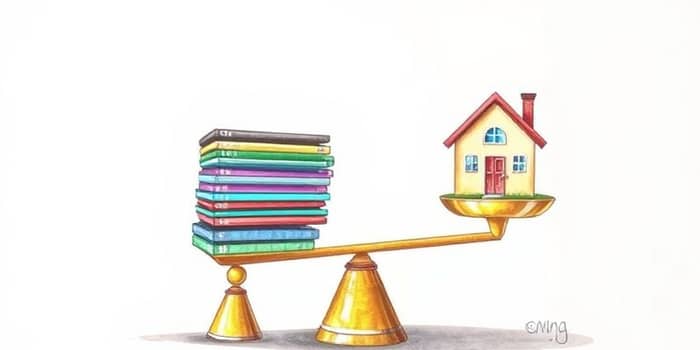
Personal finance is often viewed as a tapestry of separate threads—mortgages, credit cards, car loans. Yet these strands are deeply intertwined. Homeownership and everyday spending habits influence one another in subtle and profound ways, shaping both short-term cash flow and long-term financial health.
In this article, we explore the dynamic relationship between credit card use and mortgages. We’ll examine hard data, uncover behavioral patterns, and offer practical guidance to help you navigate the lending landscape with confidence and foresight.
Mortgages represent the vast majority of household debt in the United States. As of Q1 2025, U.S. homeowners owe $12.80 trillion across 85.78 million mortgages, averaging $149,266 per borrower.
By contrast, credit card debt stood at $1.166 trillion at the end of Q3 2024, accounting for 6.45% of total consumer debt, with an average balance of $1,942 per account. Home Equity Lines of Credit (HELOCs) add another $402 billion, or 2.2% of debt, with average balances of $30,594.
Securing a mortgage often triggers an average short-term increase in credit card utilization of 11.1 percentage points. Around major housing purchases, homeowners see a significant spike around mortgage purchase—balances climb more rapidly for several quarters before finally stabilizing.
This pattern intensified after the 2008 financial crisis, peaking at 12.9 points, as buyers faced larger down payments and tighter budgets. Interestingly, mortgage holders carry roughly three times more card debt than those without mortgages, but similar utilization rates because of proportionally higher credit limits.
Two main forces drive this relationship:
Mortgage lenders meticulously analyze both your credit card balances and utilization rates. Conventional wisdom holds that housing costs should not exceed 28% of gross monthly income, with total debt payments capped at 36%. Exceeding 50% can sharply reduce approval odds.
Credit utilization—the ratio of card balances to available credit—accounts for 30% of your FICO score. A high ratio signals risk, while a well-managed ratio boosts your profile. Recent inquiries or high outstanding balances on cards can tilt the decision against you.
To improve your standing, consider strategic mid-month payments to lower reported balances. Requesting higher limits (when prudent) can also push utilization downward, though this must be balanced against the temptation to spend more.
In late 2024 and early 2025, credit card delinquencies remained elevated. A record percentage of accounts at large banks made only the minimum payment—a 12-year high—while 90+ day delinquencies on cards outpaced those on student loans by over eight-fold.
Average American cardholders used 23.5% of their available credit and paid about $273 monthly. Rising minimum payments and late fees threaten both card and mortgage portfolios, as consumers juggle multiple repayment obligations.
Demographically, 78.9% of mortgages in early 2025 went to "super-prime" borrowers (credit scores ≥720), while just 4.7% went to subprime applicants (scores <620). Meanwhile, median mortgage sizes rose 14% year-over-year, and card limits at the 75th and 90th percentiles climbed by more than 5%.
Credit cards and mortgages are not isolated silos—they feed into each other. Understanding how home financing influences your everyday credit use, and vice versa, empowers you to make smarter choices at critical moments.
By keeping an eye on utilization rates, maintaining prudent DTI ratios, and preparing for the upfront costs of homeownership, you can strengthen your chances of securing the best mortgage terms without falling into credit card traps.
Your path to financial security is paved with informed decisions. Recognizing the link between credit cards and mortgages is the first step toward mastering that journey.
References













